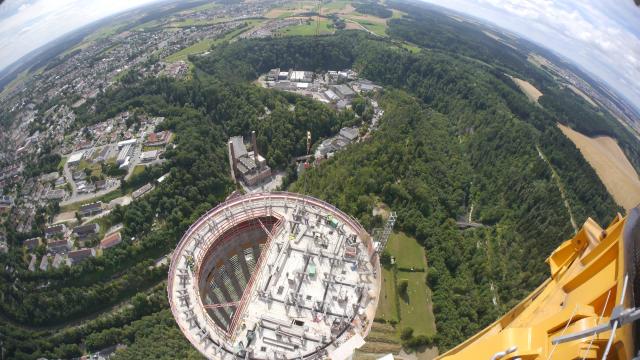How do you design a new type of elevator without installing it in an existing building? It’s a chicken/egg question that engineers have long struggled with — even using abandoned mine shafts to test new technology.
Take ThyssenKrupp, the German elevator company that, last year, announced it had developed the elevator of the future. Called Multi, the system uses magnetic levitation technology borrowed from its maglev train design Rapidtransit to propel the elevator’s cabins through a shaft, free of conventional rope. What’s more, ThyssenKrupp claimed, the maglev system will allow elevators to move across buildings horizontally, stringing multiple cabins along a complex loop that’s better suited to larger, denser urban buildings.
Sounds great, right? But testing such a system is nearly as difficult as developing it. Today, the company said it had topped out on a 761-foot-tall concrete tower in southwest Germany — the tallest observation tower in the country — that will make that process easier.
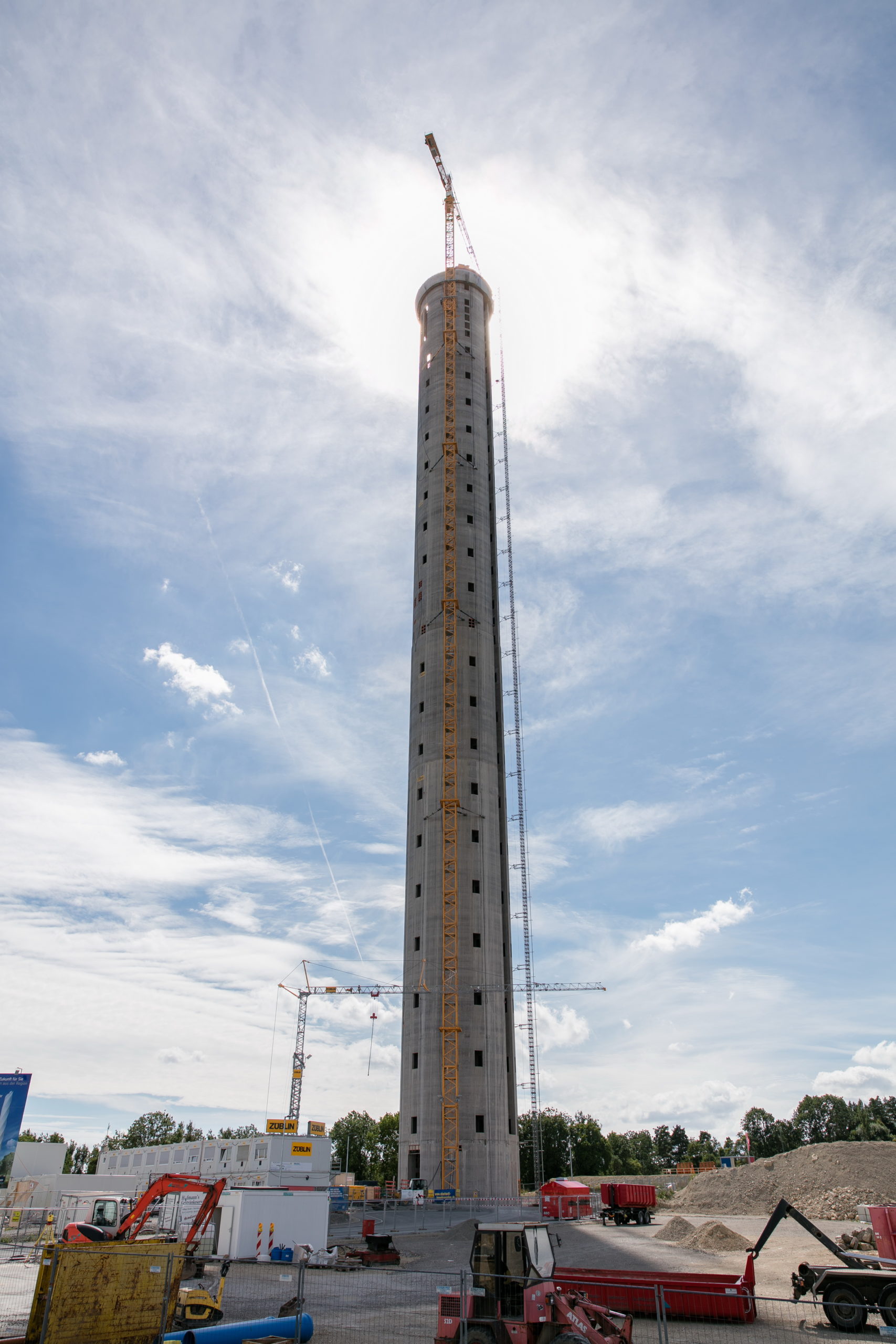
Designed by the great German architect Helmut Jahn, the structure will eventually be cloaked in a twisting, lightweight white facade. But the tower itself was built using a construction technique called slipforming, normally used to build simpler, larger concrete structures, that allows workers to pour a continuous concrete structure into formwork very quickly (at one point, this tower rose at a rate of 13 feet per day, and it only took ten months to top it out).
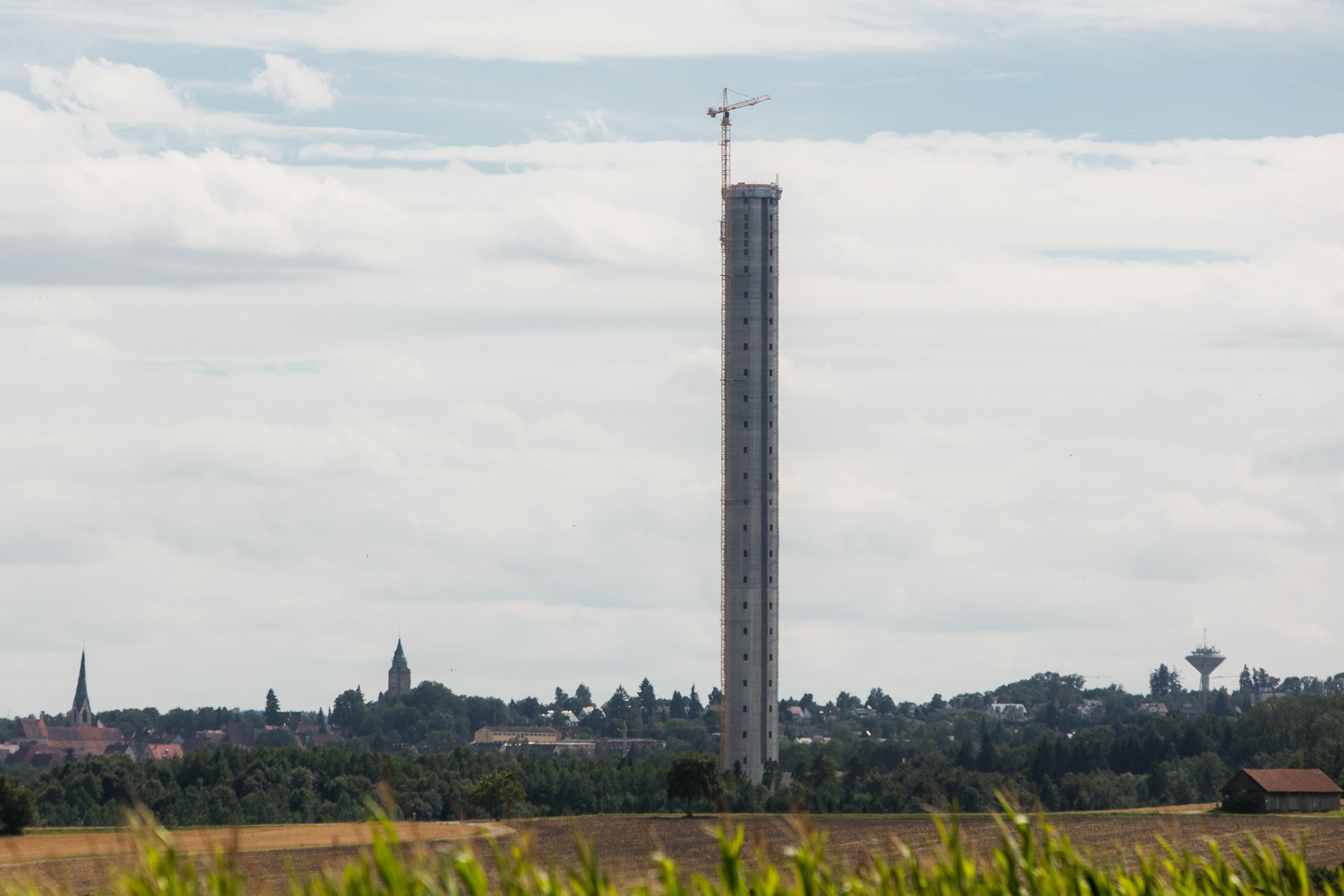
The interior is, as you might expect, just elevator shafts: 12 in all, three of which will be used specifically for testing the Multi prototypes. The other shafts will test emerging tech, too, including super-fast lifts that move at speeds of up to 60 feet per second. Now, the company will spend a few months fitting out the bare concrete shell with the infrastructure needed to test and study its systems — as well as an observation deck up top.
The problem of finding long, deep places to recreate great heights isn’t new. Take NASA, which has maintained a Zero G Research facility in Cleveland for 50 years. There, scientists can recreate weightlessness for just over 5 seconds, thanks to a 432 foot-deep underground shaft.
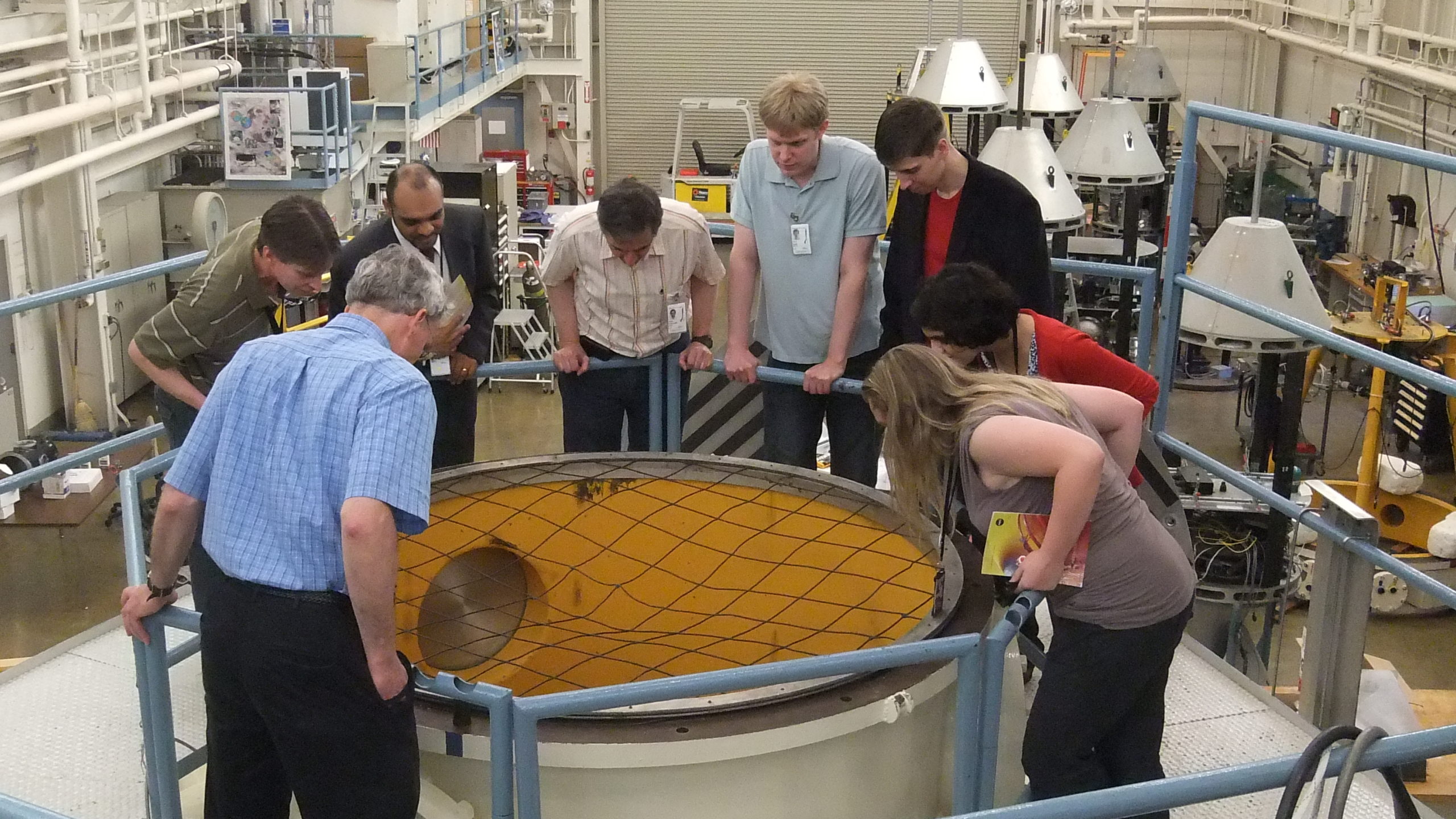
And ThyssenKrupp’s competitor, Kone, has its own system for testing elevators: It turned a 118-year-old abandoned mine in Finland into a testing facility that allows it to test elevators for 900-foot-plus supertall skyscrapers — helpful, since Kone is in the process of designing the cabins for a skyscraper in Jeddah that is aiming to be the first one-kilometer-tall tower.
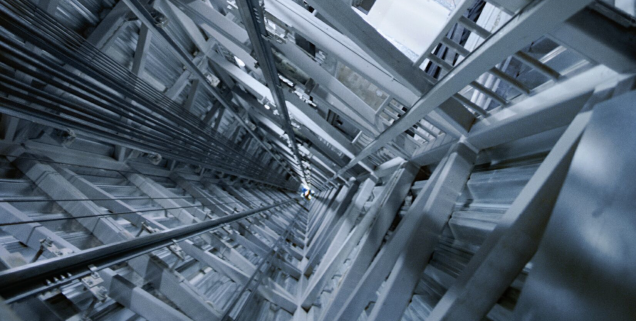
It will be a few more months until ThyssenKrupp’s tower actually begins drop tests, and we’re likely to hear more about the specifics of the systems it’s testing when it does. But what’s really interesting about this project? The fact that the construction of new types of tall buildings — and larger ones — is necessitating the design of entirely new types of structures to test those conditions, too.
Images via ThyssenKrupp; h/t CTBUH.
Contact the author at kelsey@Gizmodo.com.
